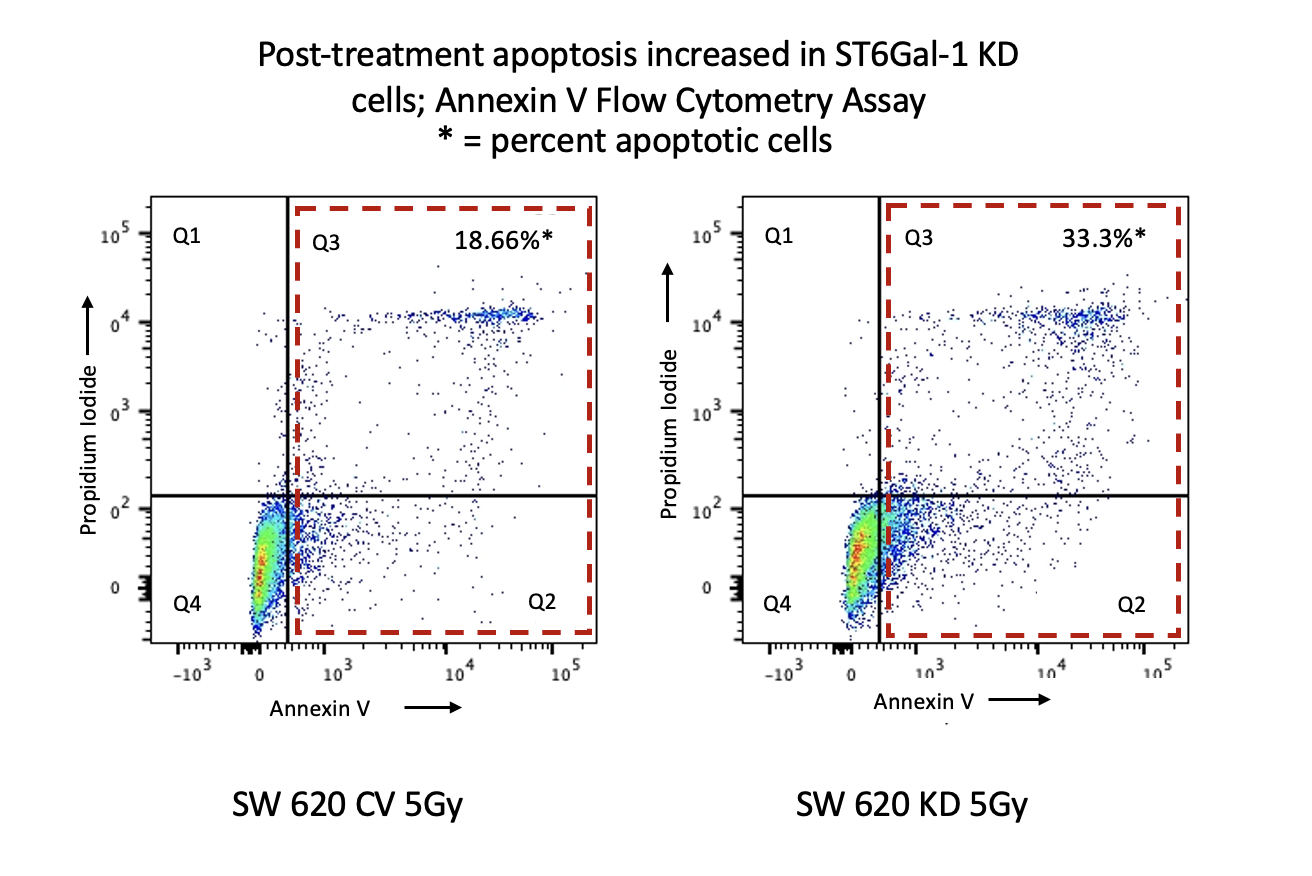M. G. Smithson1, R. Irwin1, G. Williams1, M. C. McLeod1, S. Bellis2, K. Hardiman1 1University Of Alabama at Birmingham, Surgery, Birmingham, Alabama, USA 2University Of Alabama at Birmingham, Cell, Development, And Integrative Biology, Birmingham, Alabama, USA
Introduction: Rectal cancer affects more than 44,000 patients annually. Traditionally, rectal cancer is treated with chemotherapy, radiation, followed by surgery but response to this treatment is variable. ST6Gal-1 is an enzyme that adds sialic acid (SA) to cell surface proteins and can modify function. Our previous studies have shown that ST6Gal-1 mediates resistance in rectal cancer cell lines, although the mechanism is poorly understood. We hypothesized that ST6Gal-1 increases following chemoradiation in primary rectal cancer organoids similar to what we have found in cell lines and that the mechanism of resistance is via decreased apoptosis.
Methods: We assessed ST6Gal-1 in treated rectal cancer organoids made from patient tumor biopsies using fluorescent staining and PCR. SW620 cells were transduced with lentivirus containing shST6Gal-1 to knockdown the mRNA (KD) or an shRNA control vector (CV). Flow cytometry was used to assess Annexin V as a measure of apoptosis. SNA is a lectin which recognizes sialic acid placed on proteins by ST6Gal-1. An SNA Lectin pulldown was performed, and western blotting was used to assess for TNFR1 antibody.
Results: We treated primary rectal cancer with chemoradiation and assessed for ST6GaL-1. We found that ST6Gal-1 protein increased via immunofluorescent staining and PCR revealed a 3-fold increase in ST6Gal-1 mRNA on day 5 (N=3, p=0.007). To further explore mechanism, flow cytometry was performed in SW 620 rectal cancer cells following chemoradiation and identified 33.3% apoptotic cells in the KD group compared to 18.66% in CV cells containing ST6Gal-1. TNFR1, which has previously been shown to be sialylated, was also explored as a potential target. Cells underwent SNA lectin pulldown to collect sialylated proteins and found sialylated TNFR1 increased 2.91-fold in treated CV samples compared to untreated but this difference was not seen in KD samples.
Conclusion:
We have shown that ST6Gal-1 is increased in cell lines and rectal cancer organoids after chemoradiation, and that apoptosis is likely one mechanism mediating this resistance via TNFR1 sialylation.
